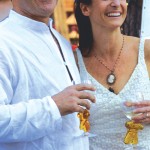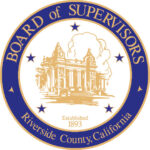The Michael Kabotie Lectures are named for artist Michael Kabotie (Hopi) who consulted with the Idyllwild Arts Native American Festival organizers for nine years until his passing in 2009. His work was grounded in the visual and musical rhythms of his tribe but was often compared to that of non-native artists including Picasso, Braque and Kandinsky, whose work of which he grew up unaware. Festival Organizer Shaliyah Ben (Diné) spoke of his leadership in bringing forth a broader emphasis of the early festival, work this year’s speakers carried on.
The lecturers shared the insight garnered from three careers, work that included what could be described as decolonizing. As the artists at the opening roundtable brought up, just because an institution has a department of American Indian Studies (AIS) does not mean that department is looking out for the interests of Iindigenous people. Institutions have their own agendas, inertia and culture. All the lectures at the festival last week were dense with ideas and examples.
In the first lecture, Dr. Meranda Roberts (Numu, Xicanx) discussed her experiences when she answered the call for postdocs to participate in the renovation of Chicago’s Field Museum Native American collection. The collection began as a home for artifacts gathered for the 1893 “Columbian Exhibition,” mounted to “celebrate” Columbus’ arrival in the Nnew Wworld. Later generations began to see the problematic nature of a collection that, like many others, was designed to document a people who were thought of as “vanishing” and unable to speak for themselves. How can a museum address stolen items? Human remains? Displays of clothing mixed to reflect the aesthetic whim of a curator and not the traditions of a culture?
“The alternative to having non-natives going into a collection and picking out ‘pretty’ pieces and telling a story about them is having knowledgeable people with first-hand experience of cultural practices and history, and their unresolved trauma and grief …,” said Roberts. “Curating should not just be telling the story that one person wants to have told. How do communities wish to have their stories told?” Roberts encouraged us all to ask ourselves, “What can I do to make room for native sovereignty in whatever work I do?” Her work at the Field came to include taking the non-native staff to tribal events, and the heavy lifting and delicate art of educating “experts.”
Debra Utacia Krol (Xolon Salian) gave Wednesday’s lecture, “Native News from a Native Lens”. Krol is an award-winning journalist who writes for USA Today and the Arizona Republic, where she is Indigenous Affairs reporter.
The topic, she said, could be rephrased as “The Good, the Bad and the Truly Horrific.” Krol provided examples of journalism, past and present, from across that spectrum. The “bad” includes Bandwagon Journalism, as reporters with superficial knowledge try to jump on the “latest thing in Indian reporting” without regarding the people who have been doing that work for a long time. Then there are the tropes and myths, including casinos, poverty and vanishing peoples. Even the most serious conferences and events often appear over photos of “dancing Indians in pow-wow regalia.” Tribal experiences are varied, and even journalists from other tribes need to educate themselves, so that goes double or triple for non-natives.
When asked for advice for aspiring journalists, she stuck to the facts: “Learn to research quickly, write clearly and concisely, and learn the AP Style Guide.”
The last lecturer was Dr James Riding In (Pawnee), Pprofessor Eemeritus of American Indian Studies at Arizona State University. In his talk, “Exploring Indigeneity’s Place in Modern Academia,” he traced his own path, beginning by recounting the depictions of American Indians he grew up seeing in media and in school, where he was taught “Manifest Destiny History.” When he challenged the prevalent stereotypes, his teachers would shut the inquiry down with, “How do you know? You weren’t there.”
He became a member of a first generation of academics, legal workers, artists and activists who made their way in the institutions. “Folks began to get their degrees, enter into academia. But without autonomy new strategies were doomed, marginalized, dominated or co-opted … The goal is programs grounded in the experience of American Indigenous nations and peoples. To recognize the disparate world views, literatures, knowledge systems, political structures, languages, but also the shared commonalities …. AIS calls for partnership between Indian nations, communities and organizations that seek tangible and sensible solutions rooted in Iindigenous and non-indigenous knowledge to address problems facing American Indian Nations.”
He also presented the changes over time in the way the federal government interacted with the tribes; treating them first as foreign nations, then “wards” unable to care for themselves, and then as sovereign entities. He himself was a consultant on the Federal Indian Boarding School Initiative, a massive coming-to-terms with one institution that was part of the larger project to assimilate Native American young people exploitatively.
Gerald Clarke (Cahuilla) was a presence at much of the festival events. He is a University of California Riverside Ethnic Studies professor, has taught at Idyllwild Arts, and was recently appointed by Gov. Gavin Newsom to the California Arts Council. He contributed work to the Parks Gallery Exhibition, participated in the initial roundtable artist event, emceed the Opening Celebration, and responded to a request for comment. Asked about the expansiveness of the festival, bringing together arts, education and journalism, all these different disciplines navigating the institutions, he said, “Tribal people are often seen as ‘spiritual, intuitive and natural;’ they take away your intellect. Romanticized stereotypes have deprived native people to be seen as intellectuals. The entire world can benefit from our Iindigenous intellectual tradition, which is knowledge that has been handed down generation to generation for centuries. I think there is a hunger in mainstream America for access to this authentic knowledge that has been hidden for centuries.”
Events began with an invocation: Speakers acknowledged the people on whose land they stood, and festival literature “respectfully acknowledges the Quwishpa Cahuillangnah (also known as Cahuilla Band of Indians) and all nine sovereign Bands of Cahuilla people who have stewarded this land throughout the generations and continue to steward this land for all future generations.”
Sponsorship came from Agua Caliente Band of Indians, Chickasaw Nation, Morongo Band of Mission Indians, San Manuel Band of Mission Indians, Soboba Band of Mission Indians, Soboba Band of Luiseño Indians, the Tribal Alliance of Sovereign Indian Nations and an anonymous foundation.










